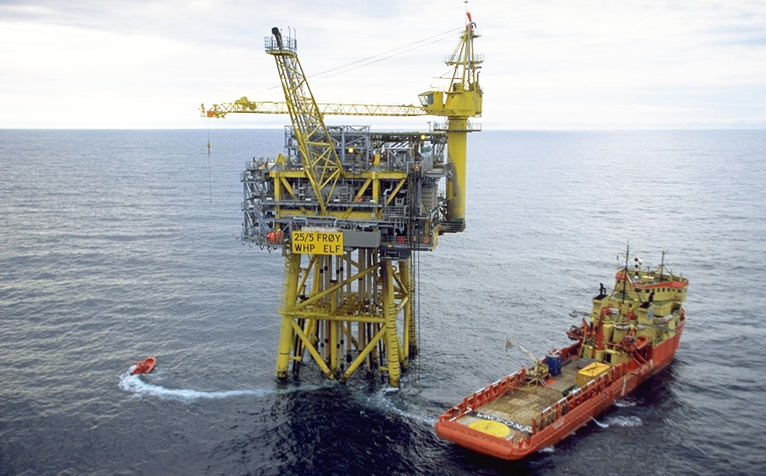Frøy comes on stream

This structure comprised a four-leg steel jacket and a two-deck topside. Four wells were drilled by Treasure Saga through a seabed template before the platform was installed in the summer of 1994. A further 11 wells were then drilled by the Mærsk Gallant jack-up, which extended its cantilevered drill floor over the upper deck of the Frøy platform.
Converting the relevant Frigg platforms from pure gas production to handling oil as well was the biggest challenge presented by the Frøy development. This work was done on TCP2 without any disruption to gas production. A new 3 400-tonne treatment module had to be built, and about 500 tonnes of other equipment installed on the platform.
Gas was first separated from the oil and water on the Frøy platform, then cooled down and injected with methanol to inhibit the formation of hydrate (hydrocarbon ice). It was next sent on through a 12-inch gas flowline to the M35 module on TCP2. Oil and produced water were pumped to the same destination through a 12-inch pipeline. Water for injection into the reservoir in order to maintain pressure came Frøyfrom TCP2 in a 16-inch pipeline. Frøy was remotely operated from the control room on Frigg QP.
Its gas was piped to St Fergus in Scotland, while the oil travelled in the Frostpipe line to Oseberg and on to the Sture terminal near Bergen. Condensate (light oil) was also transported to land via Frostpipe, which helped to share the investment in and operating cost of that system. This transport solution became operational on 14 March 1994 when Lille-Frigg began production. Ordinary output from Frøy started on 15 May 1995.
Fairly substantial production problems were faced on Frøy because of a high level of water in the wells, which reduced lift, and deposition in the wells from the seawater used for injection.
Odin ceases productionRemoval of North-East Frigg